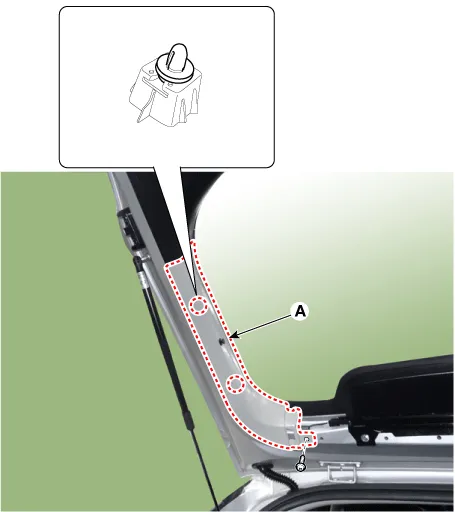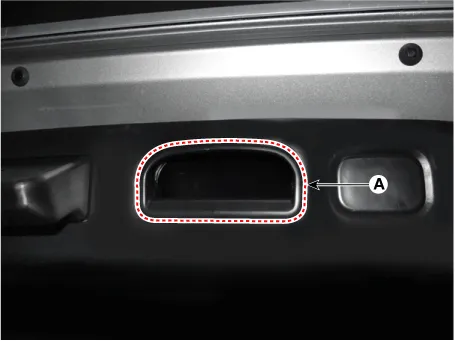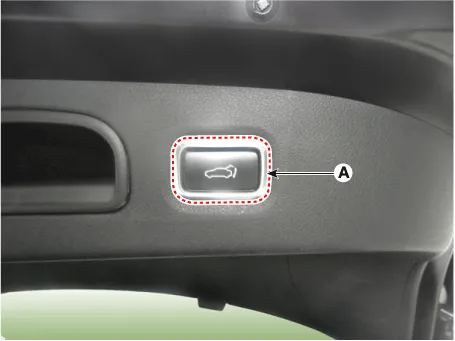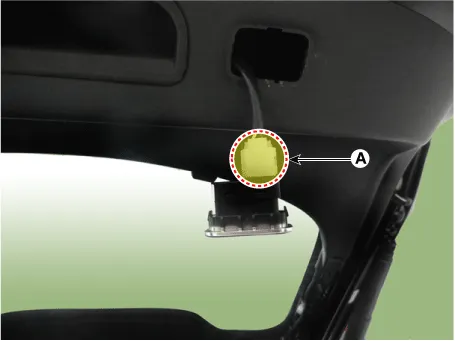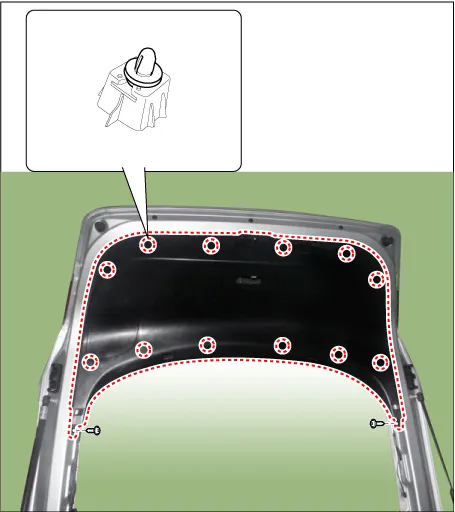Kia Stinger CK: Tail Gate / Tail Gate Assembly
Components and components location
| Components Location |

| 1. Tailgate assembly |
Repair procedures
| Replacement |
Wear gloves to protect hands from injury. |
When removing and installing the tail gate, an assistant is needed. |
| 1. |
Remove the tailgate upper trim (A).
|
| 2. |
Remove the tailgate side trim (A) after loosening the mounting screw.
|
| 3. |
Remove the tailgate inside full handle cap (A) by using a remover.
|
| 4. |
Separate the smart tailgate inner switch (A).
|
| 5. |
Remove the smart tailgate inner switch after disconnecting the connector (A).
|
| 6. |
Remove the tailgate trim (A) after loosening the mounting screws.
|
| 7. |
Disconnect the high mounted stop lamp connector (A).
|
| 8. |
Remove the high mounted stop lamp (A) after loosening the mounting bolts.
|
| 9. |
Separate the extension wiring harness (B) after disconnecting the connectors (A).
|
| 10. |
Using a screwdriver, separate the both ends of the tailgate lifter (B) after removing the socket clips (A).
|
| 11. |
Remove the tailgate assembly (A) after loosening the mounting bolts.
|
| 12. |
Install in the reverse order of removal.
|
Other information:
Kia Stinger (CK) 2018-2023 Service Manual: Securing a child restraint with a lap/shoulder belt
When not using the LATCH system, all child restraints must be secured to a vehicle rear seat with the lap part of a lap/shoulder belt. Automatic locking mode Since all passenger seat belts move freely under normal conditions and only lock under extreme or emergency conditions (emergency locking mode), you must manually pull the seat belt all the way out to shift the retractor to the “Automatic Locking” mode to secure a child restraint.Description and operation Description Electric E-CVVT system is electric continuous variable valve timing system. It is located on the intake camshaft of the engine and uses motor rotation to control the rotation angle of camshaft relative to the rotation of crankshaft regardless of engine pressure. E-CVVT controls the DC motor current (duty signal) to more closely control the system compared to the previous pressure type, to increase reaction speed of cam, to improve startability, and to reduce the emission of exhaust gas.



